Wondering exactly what a verbena is and how to care for it? Here's our guide on everything you need to know about the perennial verbena and its care.
What is verbena?
Is verbena a perennial?
Verbena is a group of half-hardy to hardy herbaceous perennials, sometimes short-lived but very floriferous over several months. Commonly known as vervain or simpler’s joy. Some species formerly called verbenas now form part of the closely related genus Glandularia, which consists mainly of trailing plants with globular inflorescences.
Verbenas originated in South and North America and Europe and their flowering season is from May to October. Verbenas grow from 20cm to 2m and require sharply drained soils in full sun.
Hardiness of a verbena varies depending on species with RHS hardiness ratings of between H3 and H7 (hardy to temperatures from -5ºC to -20ºC), and suitable for gardens in USDA zones 3a to 11, again depending on species.
See below for how to cultivate verbena, where to see and buy it and a selection of the best verbena to grow in your garden.
Cultivating verbena and when to cut down
The South American species and cultivars thrive best in moisture-retentive, free-draining soils in full sun. They work well in gravel gardens and will seed with abandon on a pea-shingle drive or path. Young seedlings are easy to weed out to allow remaining plants to have the space to grow well without too much competition.
Verbena rigida and its cultivars die down at the end of the growing season and reappear in spring through spreading underground rhizomes. Colonies can be kept in check easily by lifting these shallow-rooted subterranean stems, which can be used to propagate plants or composted.
Verbena bonariensis is best cut down by two thirds at the end of the season to prevent wind rock and in the spring cut down further to a pair of strong shoots near the base of the plant. This will ensure good sturdy growth and the removal of apical tips around mid-May will encourage further branching, slightly shorter growth and more flowers through the season.
Alternatively, use one of the shorter cultivars, such as Verbena ‘Lollipop’ or Verbena ‘Little One’, which are 75cm and 60cm in height respectively, although to my mind they lose some of the grace and elegance of the species.
The hardier North American species will tolerate a much wider range of conditions and are perfectly happy in most borders as long as they are not waterlogged in winter. In spring they are best cut down to strong basal shoots but the silhouettes can look effective throughout the winter, rimmed with hoar frost or decorated with spider’s webs in the autumn. The seedheads provide shelter and food for many insects and seed for birds.
This genus has few problems, the only one that I have occasionally seen is powdery mildew in very dry seasons. If observed in its infancy, a seaweed feed will usually cure it. All verbenas propagate easily from cuttings and most of them from seed with the exception of the hybrid Verbena macdougalii ‘Lavender Spires’, which is sterile.
The best verbena plants
Verbena bonariensis
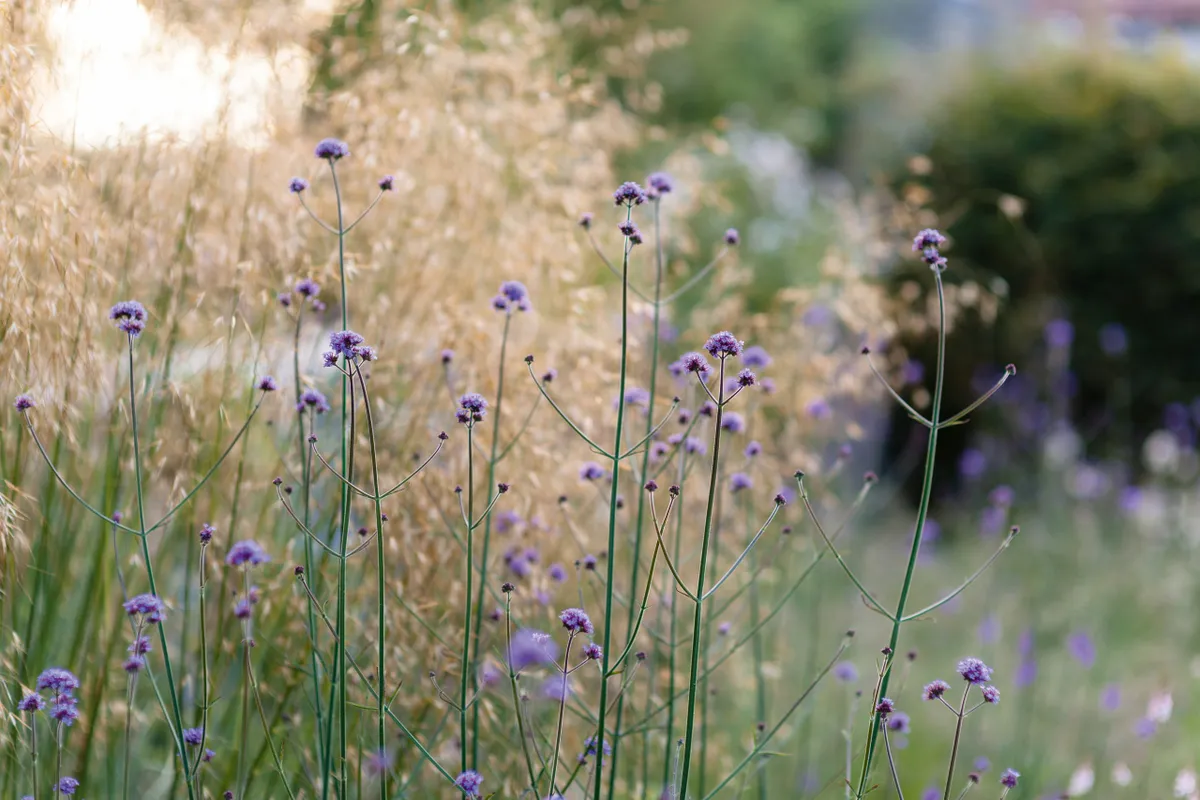
Tall and structural, it is the archetypal see-through plant to frame other subjects behind it. Hummingbirds, hawk moths and brimstone butterflies are particularly attracted to the massed, lilac-purple flowerheads. 1.5m. AGM. RHS H4, USDA 7a-11.
Verbena macdougalii ‘Lavender Spires’
SQUIRREL_TEXT_13081049
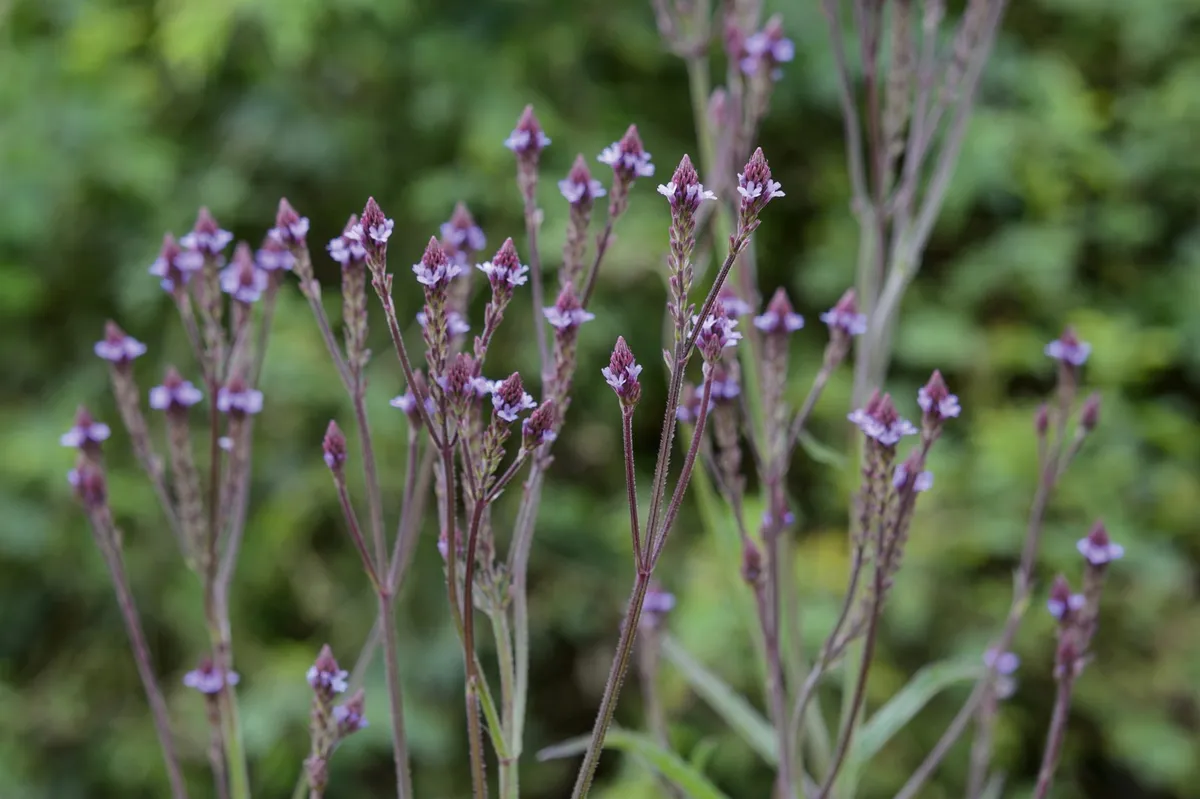
A serendipitous discovery in a seed tray of Verbena macdougalii. A reliably perennial, sterile hybrid, producing no seed but full of nectar for pollinating insects, creating a strong vertical accent. 2m. RHS H5.
Buy Verbena macdougalii ‘Lavender Spires’ from Beth Chatto's Plants & Gardens
SQUIRREL_13081049
Verbena officinalis var. grandiflora ‘Bampton’
Purple suffused stems and leaves are a great foil for the tiny, jewel-like, vivid pink flowers produced in abundance on multi-branched flower stems. Seeds freely in well-drained soil in sun. 1.2m. RHS H6.
Glandularia corymbosa
Known until recently as Verbena corymbosa, this vervain offers myriad, star-like, lilac flowers over toothed foliage that takes on a silvery-green appearance in the sunlight. 90cm.
Buy Glandularia corymbosa from eBay
Verbena bonariensis ‘Lollipop’
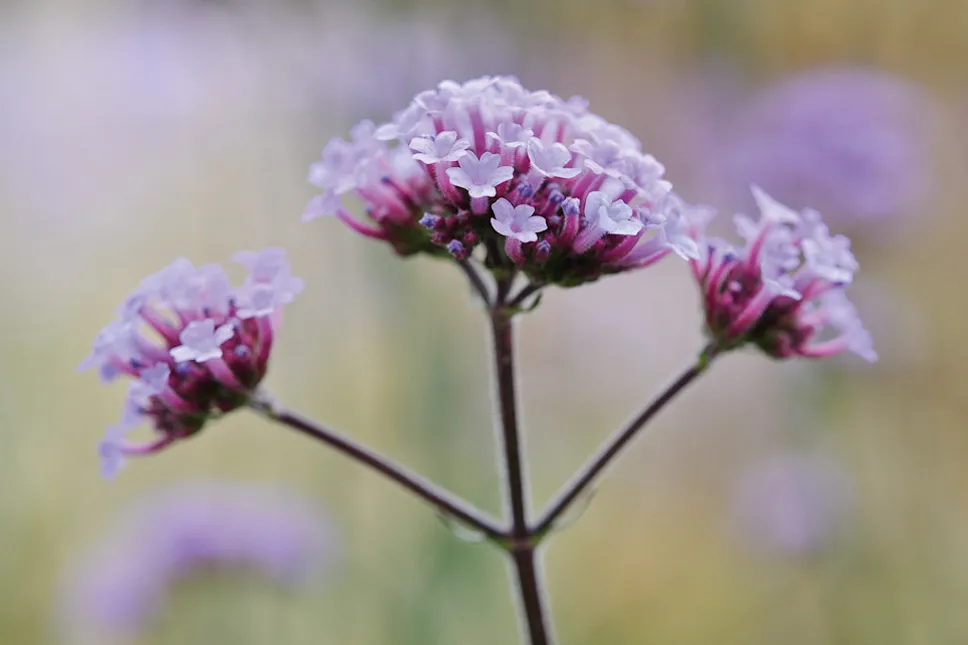
A small bonariensis cultivar, which together with Verbena bonariensis ‘Little One’ is a recent introduction. Good for smaller gardens and containers. 75cm. USDA 7a-11.
Verbena hastata
SQUIRREL_TEXT_13099809
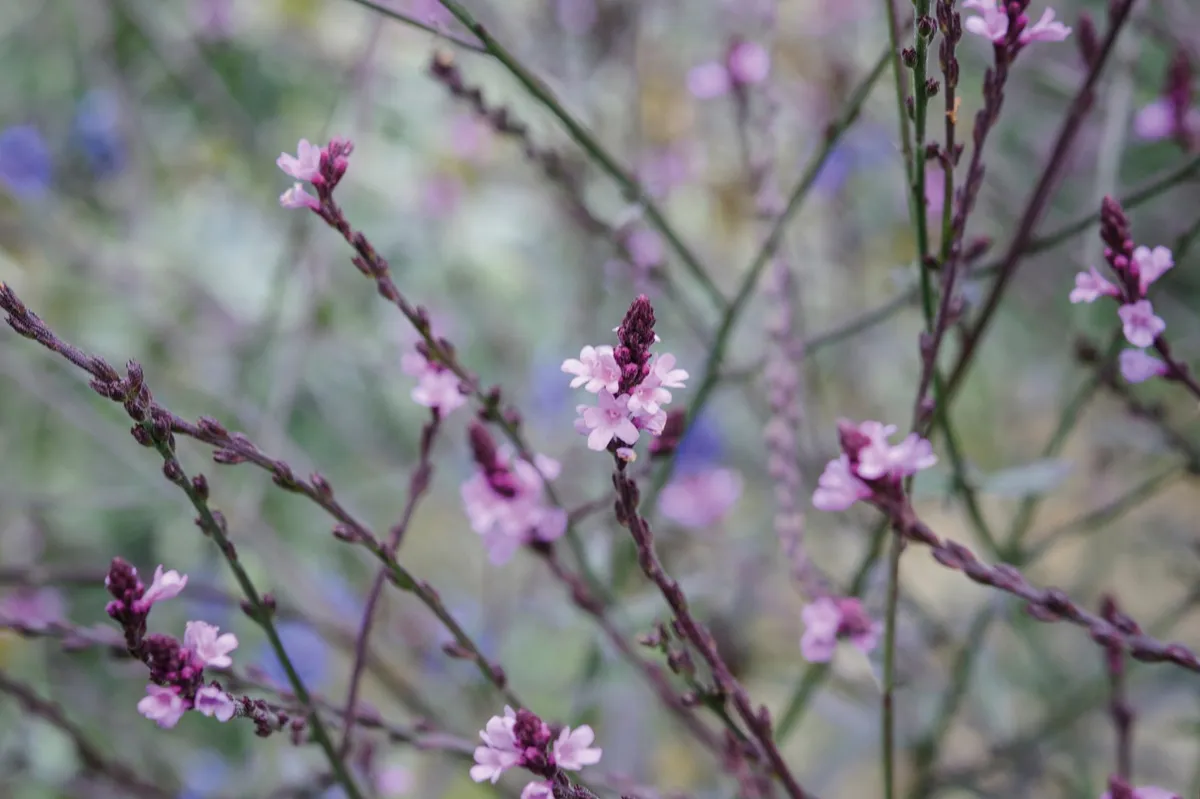
Blue vervain is a rigidly erect and multi-branched plant, with tight little spikes of bluish-violet flowers in later summer, retaining a strongly architectural skeleton into the winter. 1.5-2m. rhs H5, USDA 3a-8b.
SQUIRREL_13099809
Verbena hastata f. rosea
This rose-pink flowered variation seeds true to colour with some plants also exhibiting an attractive purple suffusion to foliage and stem, enhancing the contrast between leaves and flowers. 2m. rhs H5, USDA 3a-8b.
SQUIRREL_TEXT_13086481
Verbena hastata f. albiflora
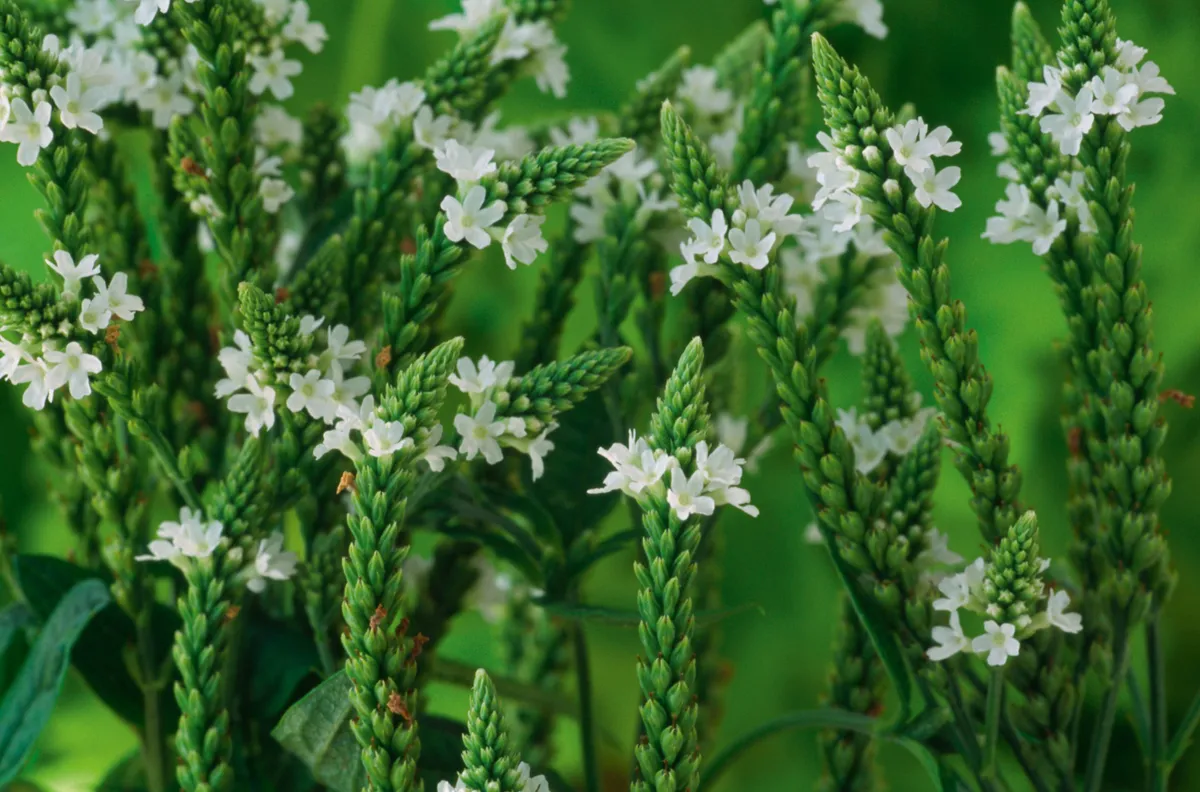
A pristine, white-flowered form that has clearer, bright-green foliage than the coloured cultivars. It is shorter in height than the straight species and is not so much of a prodigious self-seeder. 1.2m.
Verbena officinalis
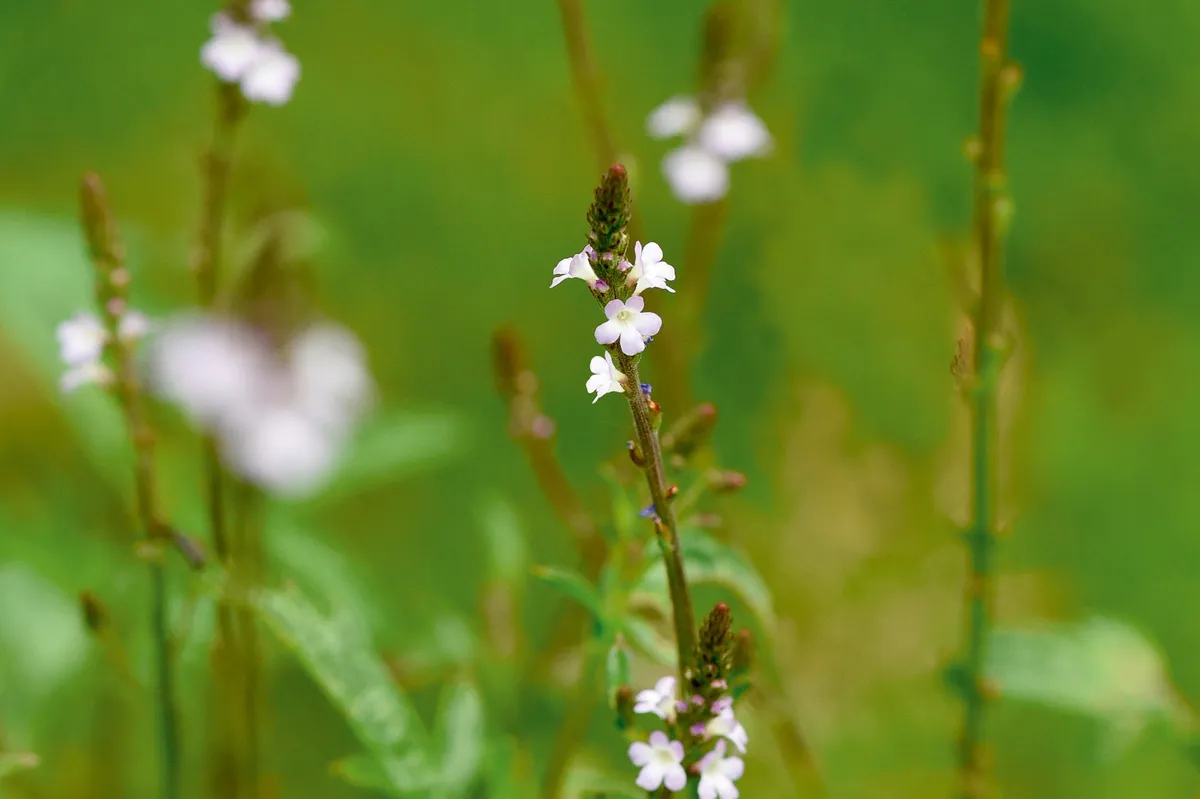
The only vervain that is native to the UK. It is usually found in rough, or disturbed, often chalky soil. A good subject for wildflower meadows and rewilding projects with tiny, pale-lilac flowers. 75cm.
Verbena rigida
Occasionally this is labelled Verbena venosa, and is an excellent verbena for gravel gardens as it offers a spreading habit and multitudes of flowers throughout the summer. 20-40cm. AGM. RHS H3.
Verbena rigida f. lilacina ‘Polaris’
Beautiful, pale-pink flowerheads are produced for weeks. Lightly scented blooms are a magnet for pollinating insects. Good companion for small sea hollies, such as Eryngium bourgatii. 40cm.
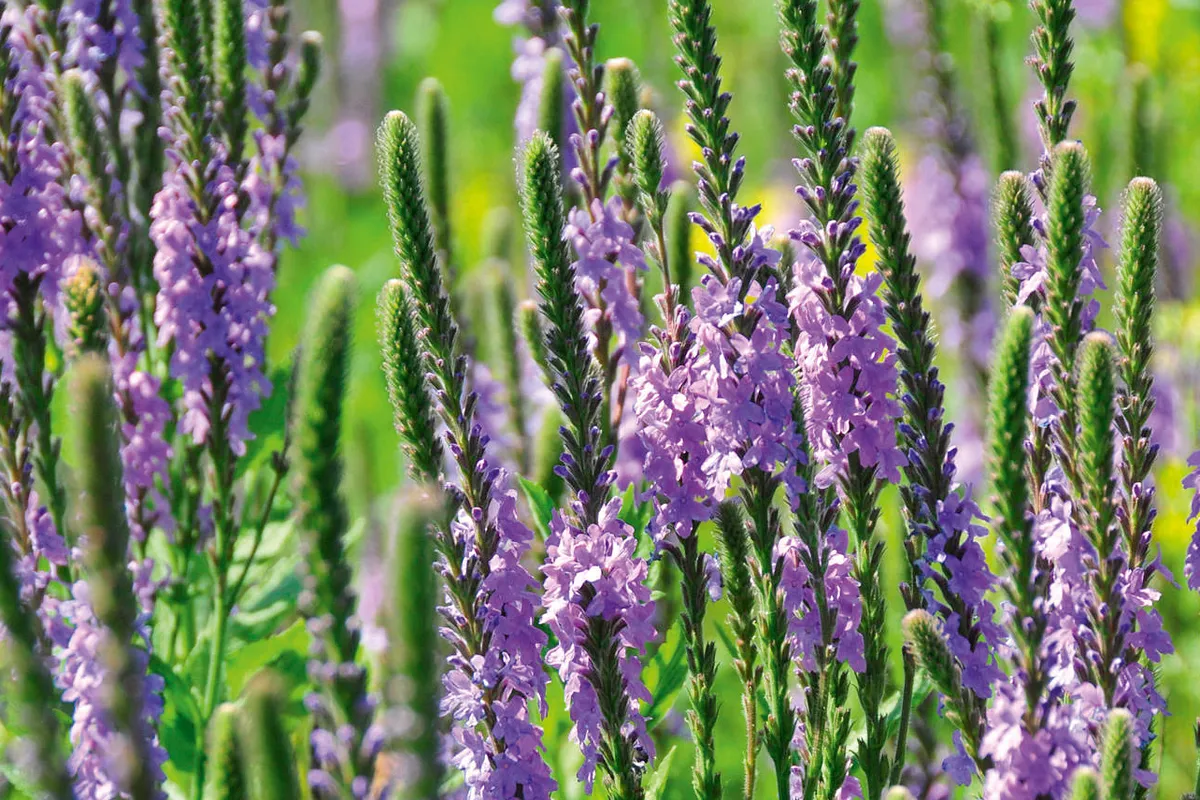
Dense white hairs on its stems and foliage give this species its more common name of hoary vervain. Its silvered appearance make it a charming foil to the spikes of lavender-pink flowers. Will happily self-seed. 1.2m. USDA 4a-7b.
Verbena rigida ‘Santos’
SQUIRREL_TEXT_13099845
This seed strain was introduced a few years ago and is a more intense rosy-purple colour form than the species with numerous dense flowerheads that flowers for many months on end. A striking addition to the group. 60cm.
SQUIRREL_13099845
What to plant with verbena
Verbenas are easy to combine with other herbaceous perennials. Taller species and cultivars provide good vertical accents, which persist as interesting skeletal remains through autumn and winter. They intermingle well in naturalistic plantings and self-seeders often place themselves in desirable positions unifying an herbaceous border.
More diminutive spreading species, such as Verbena rigida, interweave among smaller annuals and perennials producing a colourful matrix attractive to humans and insects alike. The colour range in this genus from white, through lilac, pink and purple is optimal for pollinating insects, which perceive ultraviolet, blue and green but do not see red.
Where to see and buy verbena
- The Beth Chatto Gardens, Elmstead Market, Colchester, Essex CO7 7DB
- Binny Plants, Binny Estate, Ecclesmachan Road, Uphall, West Lothian EH52 6NL
- Crocus
- Dove Cottage Nursery and Garden, Shibden Hall Road, Halifax, West Yorkshire HX3 9XA
- Phoenix Perennial Plants, Open by appointment only
- Sarah Raven, 1 Woodstock Court, Blenheim Road, Marlborough, Wiltshire SN8 4AN


